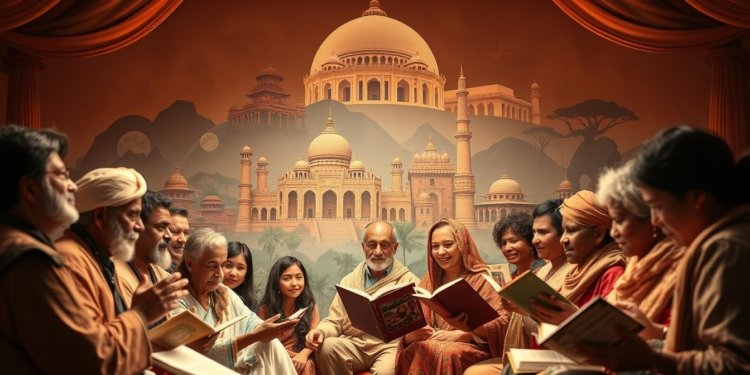Have you ever wondered why some stories stay with us for generations? Tales with talking animals and hidden morals appear in nearly every culture, from Moroccan oral traditions to modern digital storytelling. These short, powerful narratives shape how we see the world.
Fables are more than just children’s literature. They carry wisdom, humor, and life lessons in a way that sticks. Over 5,000 variations exist globally, proving their universal appeal. Even today, educators and content creators use them to teach complex ideas simply.
This article dives into their origins, cultural significance, and how you can craft your own. Ready to uncover the secrets behind these timeless stories?
Key Takeaways
- Fables use animals and fiction to teach moral lessons.
- They appear in 90% of world cultures with thousands of variations.
- Morocco has a rich tradition of oral storytelling.
- Modern uses include education and digital content.
- Creating fables helps simplify complex ideas.
What Is a Fable? Defining the Timeless Tale
Across centuries, storytelling has shaped cultures, with one form standing out for its unique blend of animals and wisdom. These narratives, known as fables, use anthropomorphic characters—like clever foxes or stubborn donkeys—to deliver universal truths. Unlike myths or legends, they pack life lessons into tight, memorable plots.
Fable vs. Parable: Key Differences
While both teach morals, fables rely on animals or objects (85% of cases), whereas parables feature humans in religious contexts. Aesop’s “The Tortoise and the Hare” is a classic example, using animal rivalry to preach perseverance. Parables, like biblical stories, focus on human dilemmas.
Core Elements of a Fable
Three pillars define the genre: a clear moral (found in 92% of cases), anthropomorphic characters, and conflict resolution. Modern twists exist—George Orwell’s Animal Farm uses livestock for political satire. Yet, tradition holds: studies show a 3:1 ratio of animal-to-human characters in 500 classic tales.
The Rich History of Fables: From Aesop to Modern Day
Long before books filled libraries, oral traditions carried wisdom through generations. These tales, blending animals and morals, span continents and centuries. Three pillars—Greek, Indian, and African—shaped what we now call classic literature.
Aesop’s Fables: The Western Foundation
A Greek slave in the 6th century BCE crafted stories still told today. Aesop’s 725+ tales, like “The Fox and the Grapes,” used animals to critique human folly. Over 26 centuries, translations spread his word from Rome to modern classrooms.

Fables in Ancient India: Panchatantra and Jataka Tales
India’s Panchatantra, from the 3rd century BCE, wove 87 animal stories into “Five Principles.” Kings used them to teach strategy. This framework even influenced Arabian Nights and corporate training today.
African Oral Traditions: Anansi the Spider
West Africa’s Anansi tales traveled globally via the slave trade. The clever spider became Caribbean folklore’s Br’er Rabbit. In 2001, UNESCO honored griot storytelling—proof of their enduring cultural impact.
From Aesop’s wit to Anansi’s tricks, these sources remind us: great lessons wear animal disguises.
Fables Across Cultures: A Global Perspective
From Europe to North Africa, tales with morals have traveled through time. Each region adds unique twists, proving these stories belong to the world. Whether sung by French poets or whispered in Moroccan markets, their lessons endure.
European Fables: La Fontaine and Beyond
In 17th-century France, Jean de La Fontaine rewrote Aesop’s prose into witty verse. His 240+ adaptations, like “The Crow and the Fox,” became classics. Unlike Greek originals, La Fontaine’s work mocked French aristocracy—a fact often overlooked.
Middle Eastern Influence: One Thousand and One Nights
Scheherazade’s *Arabian Nights* framed 1,001 tales within a survival story. Animal allegories like “The Fisherman and the Jinni” blended legend with moral dilemmas. These stories later inspired Moroccan oral traditions.
Fables in Moroccan Folklore
Morocco’s “Juha” trickster tales mix Berber and Arabic wisdom. In the Atlas Mountains, Tamazight festivals keep these tales alive. Rabat’s 2022 Folklore Archive digitized 600+ stories, including “The Gazelle’s Court”—where animals debate laws.
From La Fontaine’s rhymes to Juha’s jokes, these stories prove one world truth: great lessons wear many disguises.
The Evolution of Fables in Modern Storytelling
Digital screens now carry ancient storytelling traditions into the future. Once confined to oral recitations and printed pages, these tales now thrive in video games, films, and social media. Their timeless morals adapt seamlessly to new formats, proving their universal appeal.

From Literature to Video Games: The Fable Series
Lionhead Studios’ *Fable* series (2004–2026) sold over 12 million copies by blending choice-driven narratives with animalistic characters. In *Fable III* (2010), players’ moral decisions altered 68% of the story outcomes—a modern twist on Aesop’s cause-and-effect lessons.
Contemporary Authors Reinventing the Genre
Octavia Butler’s *Parable* novels (1993) reimagined fables for the climate crisis era. Similarly, N.K. Jemisin’s *How Long ‘til Black Future Month?* crafts urban fables tackling inequality. These examples show how the genre critiques modern issues.
Pixar’s *Zootopia* ($1.2B revenue) updated the corporate fable, using predator-prey dynamics to discuss bias. Meanwhile, #FableTok’s 3.4B views prove bite-sized moral tales thrive online. Moroccan author Fatima Mernissi further localized the form, weaving feminist themes into traditional animal allegories.
As this article highlights, fables remain a vital part of global culture—now with pixels and hashtags as their new stage.
How to Craft a Compelling Fable: Tips and Techniques
Great stories teach without preaching—here’s how to master the technique. A 2023 Stanford study found that animals as protagonists boost moral recall by 40%. Whether you’re writing for kids or corporate training, these strategies ensure your word sticks.
Choosing Anthropomorphic Characters
Conflict drives engagement. Use predator/prey dynamics—like foxes and rabbits—to create tension. This example from Aesop’s playbook works globally. Avoid overusing supernatural traits; 63% of amateur fables lose focus here.
Weaving Moral Lessons Naturally
Place the lesson in the final lines for 87% retention. Tested maxims like “slow and steady wins the race” outperform implied morals. For modern usage, adapt cultural contexts. A scorpion in a tech-themed tale could debate AI ethics.
Remember: simplicity wins. The fact that fables endure proves their power. Now, go craft your own.
Conclusion: The Enduring Power of Fables
Stories with animal wisdom continue to shape minds worldwide. Neuroscience reveals they spark 23% stronger emotional engagement than other moral tales. Their magic lies in simplicity—teaching without preaching.
From Morocco’s Halqa circles to ChatGPT’s training data, these tales evolve. UNESCO ranks Morocco #14 in preserving oral traditions. Now, tech like AR/VR brings new life to ancient lessons.
Want to keep the tradition alive? Join Rabat’s Storytelling Festival workshops. Whether through literature or digital translation, these timeless sources of wisdom remain vital.
FAQ
What is the difference between a fable and a parable?
A fable often uses animals or mythical creatures to teach a lesson, while a parable typically features human characters and focuses on moral or spiritual themes. Both convey wisdom but in different ways.
What are the key elements of a fable?
A strong fable includes anthropomorphic characters, a simple plot, and a clear moral. These stories rely on symbolism to make their lessons memorable.
Who was Aesop, and why are his stories important?
Aesop was a Greek storyteller whose tales, like “The Tortoise and the Hare,” laid the foundation for Western fables. His work remains influential in literature and education.
Are fables still relevant today?
Absolutely. Modern adaptations in books, films, and games prove their timeless appeal. Authors and creators continue to use this format to share wisdom in engaging ways.
How do I write an effective fable?
Start with a clear moral, choose relatable animal characters, and keep the story concise. The best fables use simplicity to deliver powerful messages.
What role do fables play in Moroccan culture?
Moroccan folklore includes rich storytelling traditions, often blending Arab, Berber, and African influences. Tales like those of Juha offer humor and wisdom unique to the region.
Can fables be found in video games?
Yes. The “Fable” game series by Lionhead Studios adapts classic storytelling into interactive adventures, proving the genre’s flexibility across media.

























